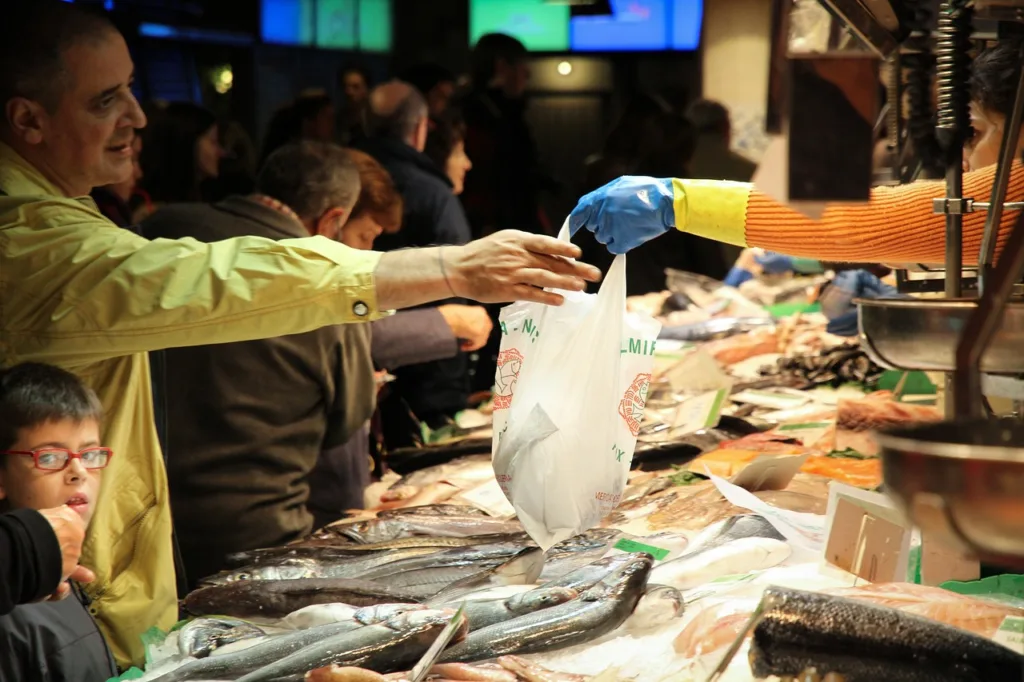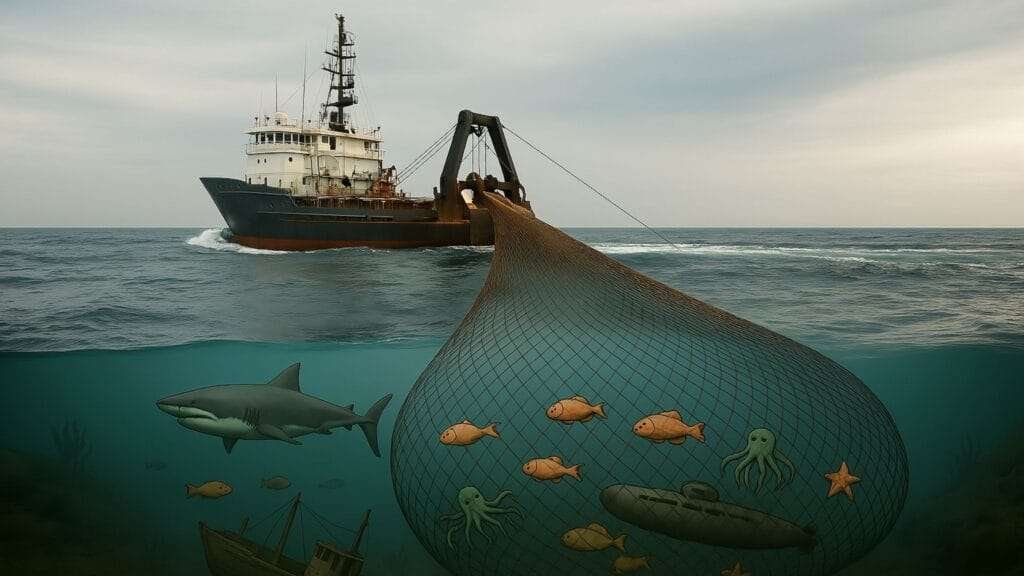Humans And Sharks Living Together In Perfect Harmony.
Overfishing and habitat loss have had a significant impact on many shark species over the last few decades, resulting in alarming population declines.
Sharks are arguably the most well-known ocean apex predators, and they play an important role in maintaining marine ecosystem balance.
Despite their global importance, shark populations have declined significantly in recent years.
Sharks probably enjoyed living in the oceans thousands of years ago. I imagine they felt privileged and could have done pretty much whatever they wanted, wherever they wanted, as long as they avoided Orcas, dolphins, and crocodiles.
Sharks have never been interested in hanging out in any particular area of the ocean. Their normal behaviour is to move around, and why they do so depends on a number of factors.
The habitat preferences of various shark species differ. While some people live in deeper oceanic regions, others favour shallow coastal waters. For example, while pelagic sharks travel across open waters, reef sharks typically remain close to coral reefs.
The temperature of the water is important to some species of sharks. While some sharks do better in warmer waters, others do better in colder climates.
They also frequently move around in response to food availability. They either migrate with their prey or gather in areas with plenty of food.
Sharks will seasonally move around in migration patterns and this is seen with many shark species. Great white sharks, for instance, travel great distances to reach their breeding and feeding grounds.
They locate the best environments for survival and reproduction thanks to these migrations.
Sharks are fairly intelligent and will take advantage of ocean currents. They can, and will, use specific currents that transport food or prey and don’t tend to go hungry whilst they are moving around. These currents influence where sharks can be found during certain times of the year.
Sharks inhabit three distinct depth zones, the surface, mid-water, and deep sea. Each zone has a unique ecological niche and prey availability.
They move around in a dynamic manner, influenced by temperature, food, currents, and individual adaptations, rather than settling into a specific section of the ocean.
Sharks are also quite a curious creature and seem to enjoy exploring new parts of the ocean.
How Human Activity Has Ruined Things For Sharks.
As good as things were for sharks in the past, they have gotten worse over the last 200 years as a result of human actions.
It is unclear whether all of the world’s shark species will survive past the year 2060 if humans continue to live on this planet in the same manner.
Targeted Shark Centric fishing for fins and teeth, combined with thousands of sharks being killed as by-catch (unintentional capture of non-target species in the world’s largest super trawler nets), has dramatically reduced shark populations.
Furthermore, the degradation of marine habitats such as coral reefs and kelp forests, which serve as important hunting grounds, worsens the future equation for sharks. Yes it is quite a rather sad dilemma.
The Way Humans Interact With Sharks.
The Hammerhead Shark, one of my favourite sharks, has a unique head shape. They look fantastic, almost like something out of a science fiction novel.
As fascinating, beautiful, and incredible as the few remaining hammerhead sharks in our oceans are, they are sadly endangered due to overfishing and stupid humans who believe that eating the useless collagen in their fins, which are entirely made of cartilage, will somehow miraculously improve their lives.
Things are improving slightly, and it is worth noting that the importance some humans place on Shark Fin Cartilage and its consumption is diminishing on a daily basis, as people become more aware of its low value, combined with the fact that Beef Cartilage is nearly twice as nutritional.
Shark fins are simply collagen-based cartilage that lacks the advantages found in cartilage from other animals, such as beef.
How Do You Hurt An Apex Predator Such As A Shark?
Sharks are caught as by-catch in the world’s largest fishing nets, which are dragged along by the world’s largest super trawlers.
These monstrous nets are probably the main reason we might not see any sharks after 2060.
Do Humans Typically Disrupt Shark Habitats?
The destruction of coastal mangroves, where juvenile sharks seek shelter and food, threatens their survival.
Sharks must be viewed as vital components of our global marine ecosystems, not as mindless assassins of humans.
It’s a shame, in my opinion, that sharks have been portrayed so negatively in so many films, most notably the Jaws film series, which came out a long time ago.
When people watch movies about humans trying to survive ruthless shark attacks, they frequently forget that these films are nothing more than expensive works of Hollywood fiction.
It’s not real, just like when you watch a Godzilla movie; that big fella is also not real, okay!
In the Jaws films, the shark was a very high-quality creation by engineers; none of the bad things in these films are real.
Instead, we watch shark-centric movies, become terrified of sharks.
For starters, sharks are not hungry all the time; if we choose to coexist in an ocean space with a shark and do nothing to attract the wrong kind of attention, it will not mind your presence.
Sharks have existed for millions of years, whereas humans have only been present for a few hundred thousand years.
Sharks don’t care what we do; they’re unconcerned about our existence and will only bother us if we give them a reason to.
So, while shark-based terror films can be entertaining, they are not real, so let us move on and stop worrying about them so much.
Sharks have suffered greatly as a result of the bizarre and non-science-based fear that shark-centric films have instilled in people.
As someone who adores sharks, I can’t understand why anyone would want to eradicate, catch, harm, or get rid of them.
They pose little threat to humans, and there are plenty of divers in the world who will tell you that they enjoy spending time among dozens of sharks.
Yes, you should keep an eye on their movements while diving with them, but when sharks do interact with divers, it is simply due to their natural curiosity about someone new in their space.
It’s Time To Start Protecting Shark Populations Worldwide.
To protect shark populations, we must recognise their importance as apex predators in balancing ocean food webs.
Their presence in the oceans in sufficient numbers is critical for healthy marine ecosystems.
Overfishing the oceans with nets large enough to entrap a dozen 747s must end because so many sharks are killed as by-catch.
A Global Shark Fining bans must be implemented as soon as possible.
Eating Shark Fins Is Silly, It’s Just Cartilage!
Shark fins contain no protein, vitamins, or minerals that contribute to a healthy diet; in fact, their composition is very similar to beef cartilage, so I’m not sure why anyone thought eating a shark fin was worthwhile.
Shark fins, like beef cartilage, are primarily composed of collagen, a protein found in connective tissues.
Beef cartilage has an added benefit in that it contains glycosaminoglycans like chondroitin sulphate and glucosamine, which help to keep cartilage hydrated and flexible.
So, while eating shark fins is essentially eating tasteless, textureless material with no health benefits, if people have convinced themselves that eating collagen via cartilage is beneficial, then eat beef cartilage and reap the benefits.
The reduced demand for shark fin soup appears to have helped, but more must be done to prevent overfishing by super trawlers.
Let’s Have A Shark Appreciation Decade.
We must increase our overall appreciation for sharks by engaging in responsible eco-tourism activities that protect their habitat.
This can provide financial incentives for conservation while also allowing people to see these magnificent creatures in their natural habitat.
This can provide financial incentives for conservation while also allowing people to observe these magnificent creatures in their natural environment.
Overfishing and habitat degradation are forcing sharks to explore new territories in search of food, increasing the likelihood of human-shark encounters.
However, completely avoiding the oceans may not be a viable solution. Instead, we should focus on responsible monitoring and prevention efforts.
Implementing robust shark monitoring and detection programmes along coastlines, using techniques such as aerial surveys, drone monitoring, and acoustic tracking, is an important step towards risk mitigation.
We need to improve early warning technologies and find ways to implement temporary beach closures as soon as sharks are detected.
We Need To Be Better Educated On How To Live With Sharks.
We need to educate the general public about shark behaviour and advise all swimmers on how to reduce risks associated with Sharks.
Swimming in oceans, seas, rivers, and saltwater lakes can be great exercise and enjoyable but it is critical to prioritise our safety.
While shark attacks are extremely rare, there are a few precautions we can take to increase our safety.
Don’t swim at dawn or dusk; sharks are more active at these times, and swimming during daylight hours reduces your chances of encountering them.
Stay as close to the shore as possible; sharks will typically be moving around farther from the shore, so staying close reduces your chances of encountering them.
However, when it comes to river systems, estuaries and harbour areas, sharks can be found swimming close to the shore for several reasons:
Shark nurseries: Young sharks that are not yet fully matured tend to favour shallow waters in close proximity to land.
Young sharks prefer water temperatures between 16°C and 22°C as this range seems to maximize their growth efficiency and this is usually the more shallow waters of a river system.
They find these areas to be a secure environment in which to develop and flourish.
The change of tides is also a problematic time to by swimming in river systems as prey will often be swimming close to the shoreline, making it an attractive hunting ground for sharks.
The warmer river waters near the shore also support a variety of prey species, which can lead sharks to venture closer to the shoreline.
We should also avoid swimming in murky water. Poor visibility increases the risk of an accidental encounter with a shark, whereas nice clear water allows you to see any potentially dangerous situations much more clearly.








